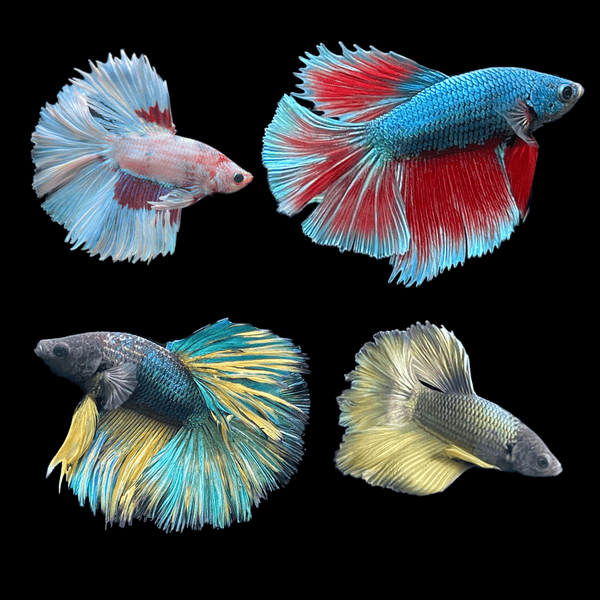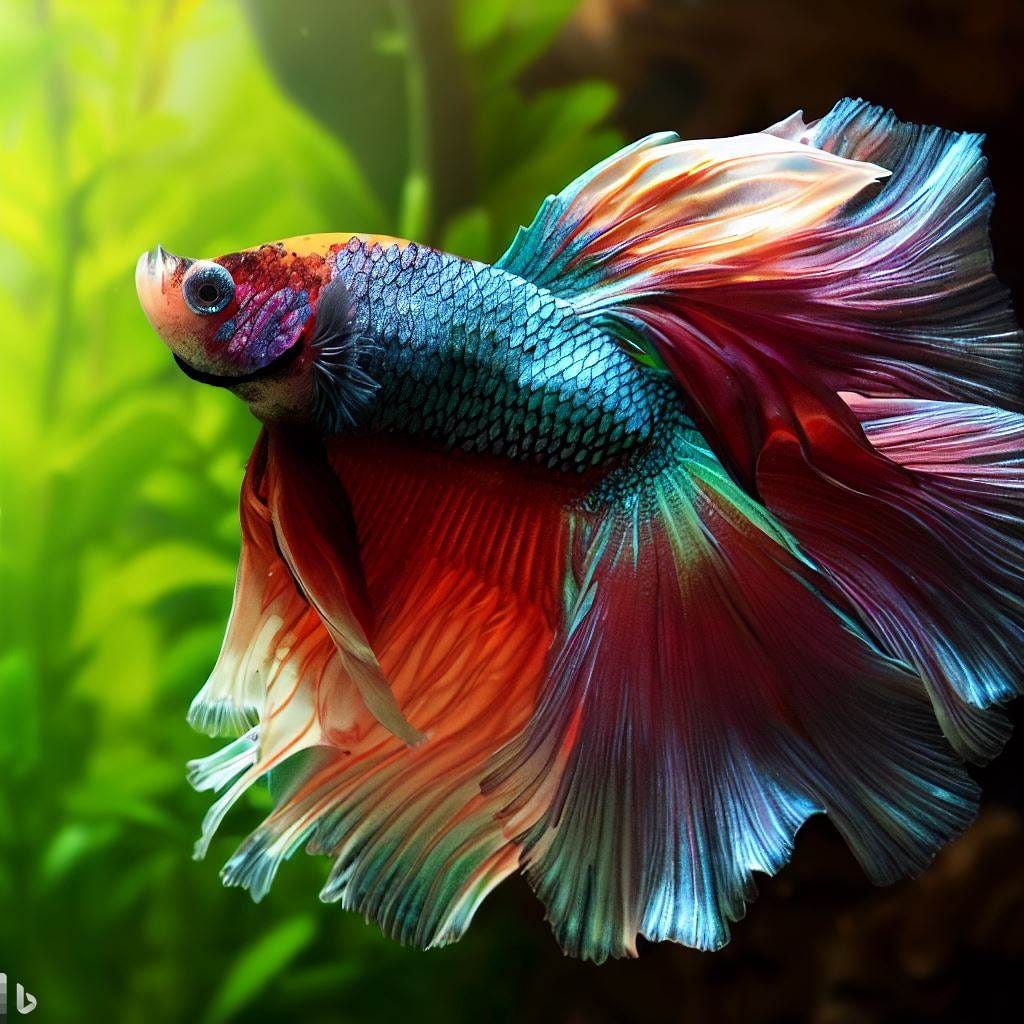The Ultimate Betta Fish Treatment Guide for New Family Pet Owners
The Ultimate Betta Fish Treatment Guide for New Family Pet Owners
Blog Article
Breeding Betta Fish: a Comprehensive Step-By-Step Overview to Effectively Raising Child Bettas From Eggs to Their Adult Years
Reproducing Betta fish is a precise endeavor that needs cautious preparation and execution to ensure the successful development of fry from eggs to develop fish. Picking genetically varied reproduction pairs with desirable features is just the start; creating an optimal environment and recognizing the ins and outs of the reproducing procedure are similarly essential. As the male Betta faithfully constructs a bubble nest and guards the valuable eggs, the succeeding phases of treatment and change demand interest to detail and knowledge of best methods. How does one navigate the difficult yet satisfying course of supporting these vibrant animals to adulthood?

Selecting Breeding Pairs
When embarking on the journey of breeding Betta fish, selecting the appropriate reproduction pairs is vital to attaining preferable qualities and a healthy lineage - betta fish. The initial step in this procedure is to recognize the specific attributes you want to boost or protect, such as shade, fin kind, and physique. It is necessary to pick genetically diverse sets to prevent inbreeding, which can result in health and wellness issues and undesirable qualities
Assess prospective breeding candidates thoroughly. A healthy and balanced male Betta should show vivid colors, an active demeanor, and well-formed fins, while the female should also present vibrant pigmentation and a rounded belly, indicating readiness for spawning. Observing the personality of both fish is crucial, as hostile or overly reluctant individuals might not reproduce efficiently.
Documentation of family tree is similarly vital. Maintaining documents of the moms and dad fish's ancestry can aid you track hereditary characteristics and prospective concerns. Furthermore, get in touch with reputable breeders or on the internet sources for guidance on picking suitable sets. Ultimately, spending time in the selection process will substantially boost the possibility of generating strong, lively children that satisfy your breeding goals (betta fish).

Preparing the Breeding Container
Creating an optimal breeding setting is an essential step after choosing appropriate pairs for Betta fish. The breeding storage tank ought to be specifically developed to offer comfort and boost the all-natural breeding behaviors of the fish. Begin with a tank size of a minimum of 10 gallons to ensure appropriate area for both the male and women Bettas.
Preserve a gentle filtering system to keep the water tidy while staying clear of solid currents that can stress the fish. Furthermore, an air stone can be contributed to supply oxygenation without interfering with the water surface area excessive.
Temperature guideline is vital; objective for a steady variety of 78-82 ° F(25-28 ° C) making use of a trusted heater. The pH level must be preserved in between 6.5 and 7.5, and regular water adjustments are necessary to make sure high water quality.
Include floating plants or generating sponges to develop hiding places for the female, while likewise motivating bubble nest structure by the male - betta fish. Make sure the container is complimentary from sharp designs and any type of prospective dangers, as the welfare of the fish need to always be prioritized during this essential stage of breeding.
The Reproduction Refine
Normally, the breeding process for Betta fish entails a series of distinct and observable behaviors that suggest readiness for reproduction. The male Betta begins by developing a bubble nest at the water's surface, which functions as a website for the fed eggs. This nest is critical, as it provides a secure setting for the eggs up until they hatch.
When the nest is established, the male will certainly present courtship actions, such as flaring his fins and displaying vivid colors to draw in the female. The lady, upon noticing the man's preparedness, will certainly respond by showing vertical stripes along her body, signaling her receptiveness.
The fertilized eggs after you could try this out that drop to the bubble nest, where the male thoroughly collects and returns them to the nest. Following this, the male thinks obligation for guarding the nest and ensuring the safety and security of the eggs up until they hatch out, generally within 24-36 hours.
Taking Care Of Betta Fry
Caring for Betta fry requires careful focus to their atmosphere and nutrition to make certain healthy growth and advancement. After hatching, Betta fry are incredibly tiny and at risk, requiring a secure and clean environment.
Feeding Betta fry is equally vital. They must be provided infusoria or finely smashed top quality fry food, as their mouths are as well small to deal with bigger bits. As they grow, you can gradually present bigger foods, such as infant brine shrimp or powdered flakes, to ensure they receive appropriate nourishment. Feed them percentages several times a day, bewaring not to overfeed, which can result in water quality issues.
Transitioning to Adult Bettas
As Betta fry fully grown, transitioning them to grown-up Bettas is an important stage that requires cautious management of their atmosphere and social communications. click for source This process usually starts when the fry get to around 6 weeks of age, whereupon they can be slowly introduced to a much more structured living atmosphere.
To facilitate this change, it is necessary to ensure that the water parameters-- such as temperature level, pH, and ammonia degrees-- are optimal and stable. Adult Betta fish thrive in cozy water (around 78-80 ° F) with a pH of 6.5 to 7.5. Slowly adjust the fry to these problems to lessen tension.
Social interactions are another crucial element; male Bettas are infamously territorial and hostile. Therefore, it is recommended to separate males into individual storage tanks as they develop. Women Bettas can be housed with each other, but care must be taken to keep an eye on for signs of aggression.
Additionally, dietary changes ought to be made as the fry grow. Integrate high-grade pellets and live foods to support their growth and health and wellness. By managing these factors effectively, you can advertise a successful transition to the adult years for your Betta fish.

Verdict
Successful reproduction of Betta fish needs cautious interest to information throughout the whole process, from selecting genetically diverse pairs navigate to this website to providing optimum take care of fry. By making certain ideal reproduction conditions and maintaining water top quality, the probability of healthy offspring increases significantly. In addition, a balanced diet regimen and progressive adjustment to grown-up environments are important for the development and development of Betta fish. Adhering to these steps carefully fosters a growing population of Betta fish, boosting both their wellness and vitality.
Report this page